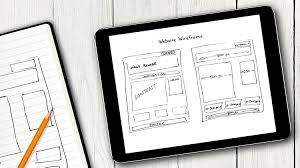Rapid tooling molding is the best way to create prototypes these days. Manufacturing has evolved by leaps and bound over the last 20 years, but the quick developments of technology have finally caught up with the needs of many industries to create prototypes for custom made parts for existing products or new developments meant to make your life easier. The ongoing research in this field has produced improved options for tooling or continuous updates on existing technology. Many users and critics long for integration, but the facts are that there are still too many variables when it comes to dealing with the raw materials commonly used to create prototypes and products. Each one of the existing options out there has their own set of benefits for the type of job that is required of them.
Common Features of Rapid Tooling Methods
With that being said, some standard features have common grounds no matter the type of rapid tooling technique you are using. The first one is that the molds need to be sturdy enough to handle plastics or resins at high temperatures. Most injection machines should be able to carry out production cycles managing high numbers of pressure per square inch clamped each time the mold comes together to cast apart. The frame itself must be strong enough to handle high pressures and ongoing impacts. When it comes to surface finishes, the pattern should have a clean build and the ability to eject the parts created easily. If you are working on multilayered products, some trimming will be needed after the cycle is completed. To avoid leaking the mold needs to be supervised, lest you run the risk of having a minimal issue botch a complete production run.
The Safe Option of 3D Printing
After making sure your project has all the grounds covered, you can choose some diverse paths to make your project work out for the best. 3D printing certainly seems the most common method of rapid tooling used by many companies out there. The system has practically overtaken classic tooling on every single aspect. The prototypes can be created in less than four weeks, revisions can be handled with a single email, the technology to make them work is fairly inexpensive, and the modern software combined with the right machinery can create just about every unique geometric shape ever conceived by the imagination of men.
More Elaborate Methods of Manufacturing
Rapid tooling has proven to be so efficient that it can also work with metals using laser sintering technology. This tech was first conceived to work with plastics and resins only, but the lasers can be tuned to higher temperatures to deal with metal shapes that can be created using specialized software and light metals such as aluminum. The finished results have received praise within the industry because the delivered products can withstand harsh environmental conditions, but are still criticized for the lack of accuracy with complex shapes. What can you gather from all this information? It’s not that difficult. You need to understand the mechanics behind your project before choosing any rapid tooling method to make sure it’s successful.



